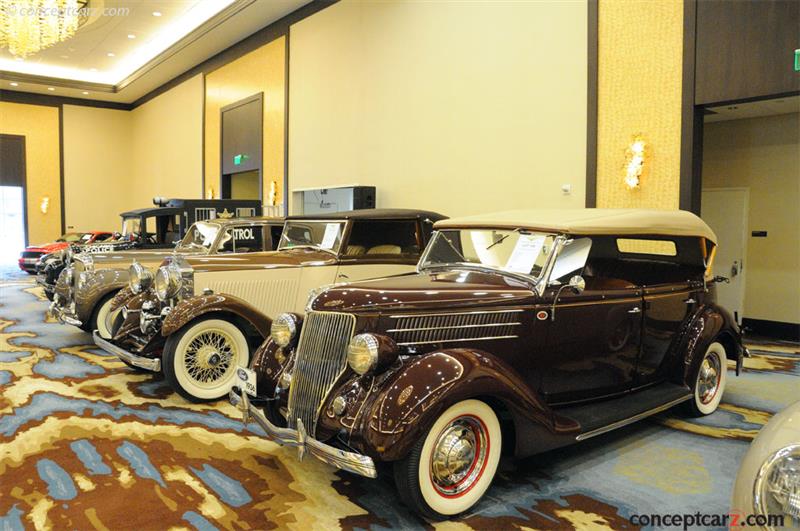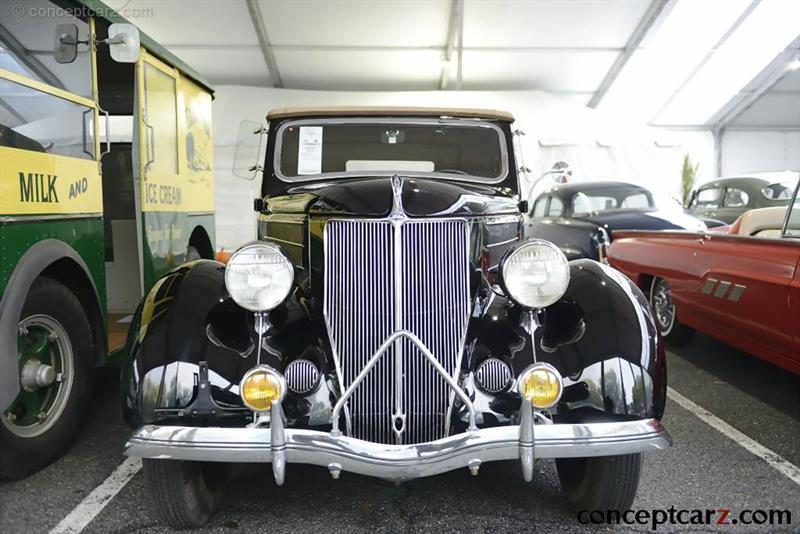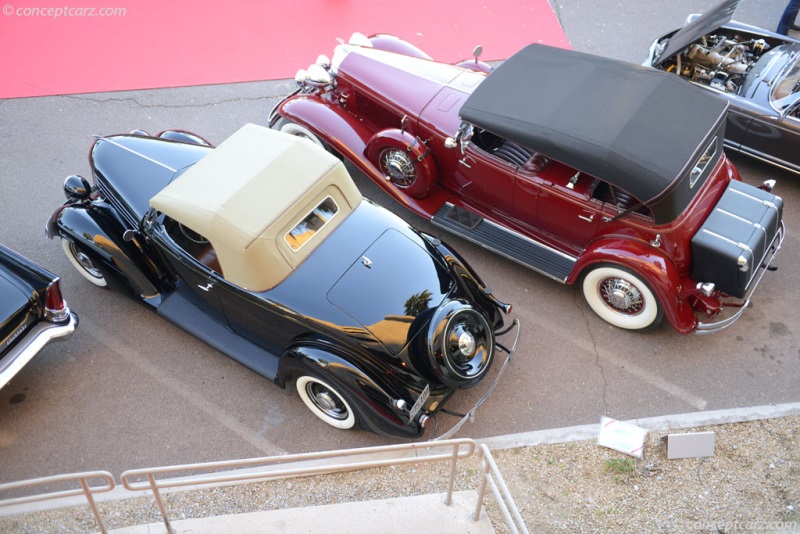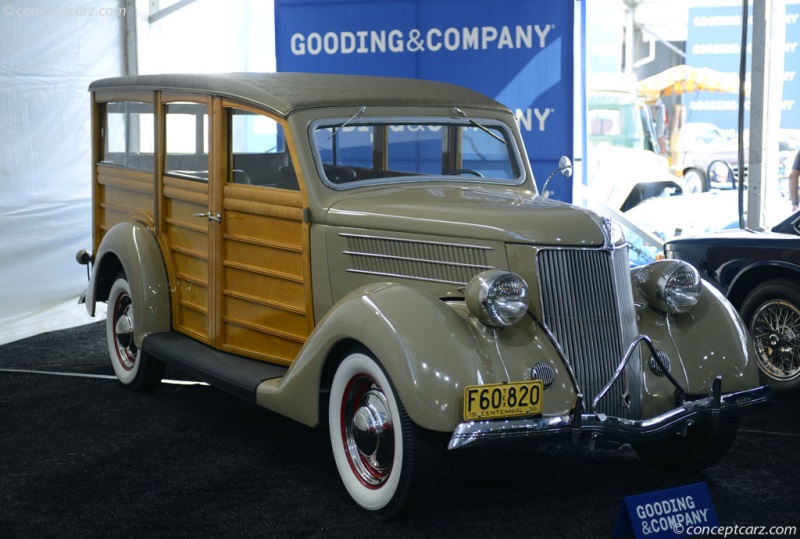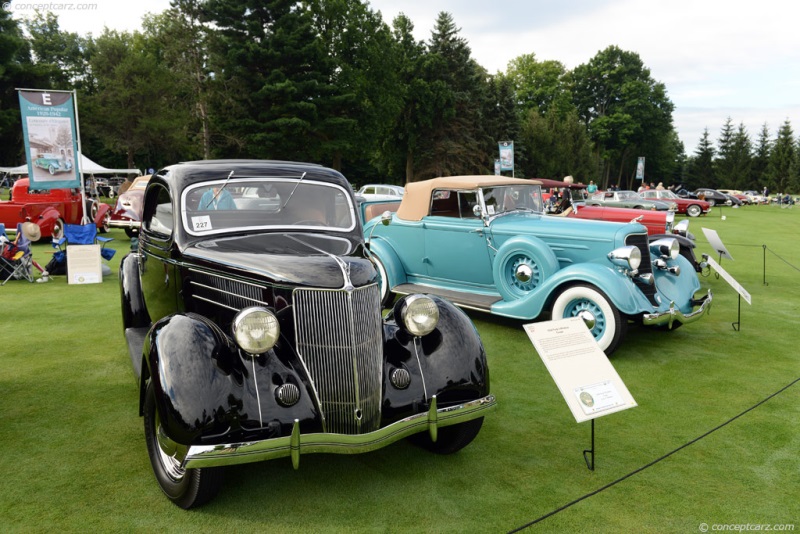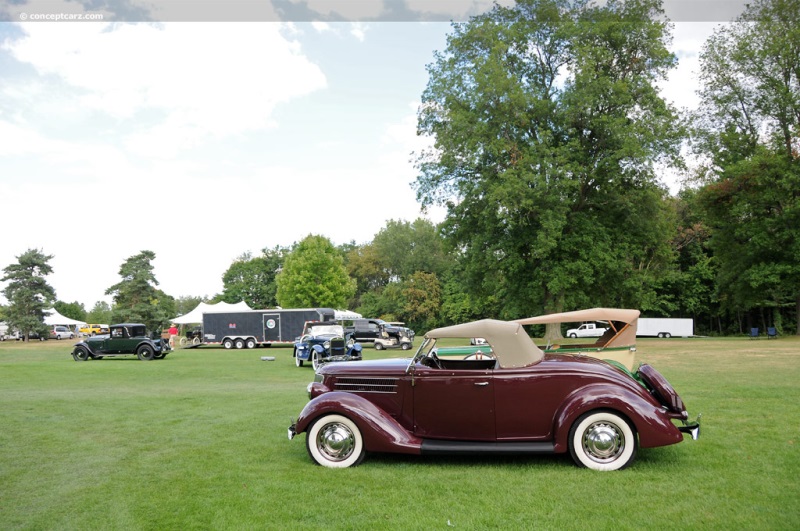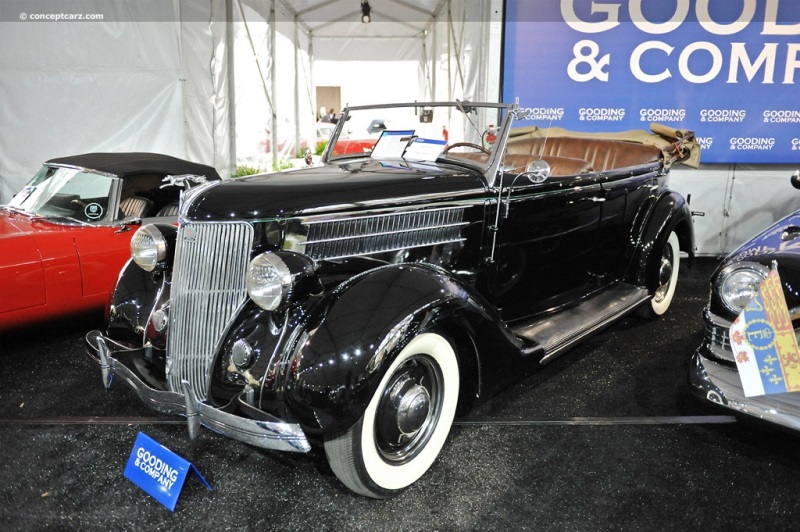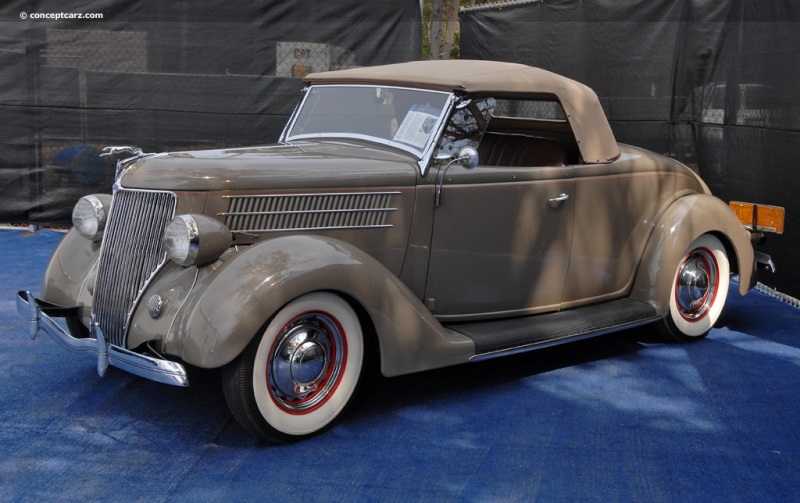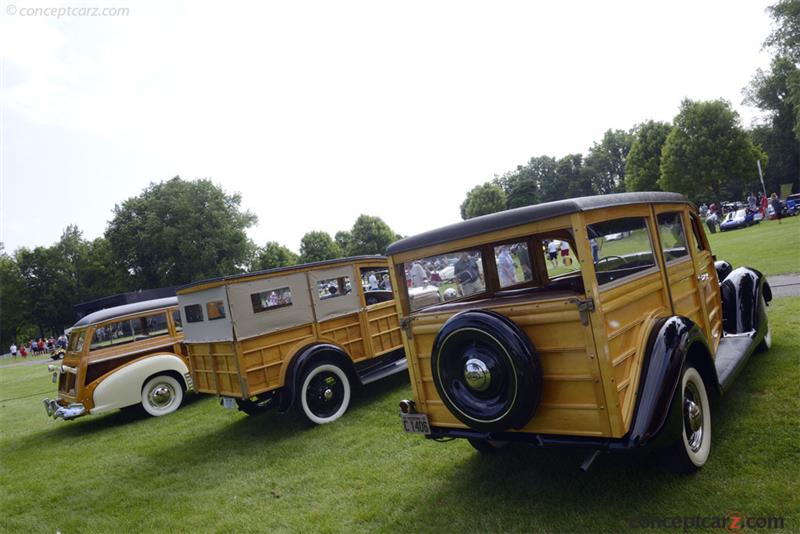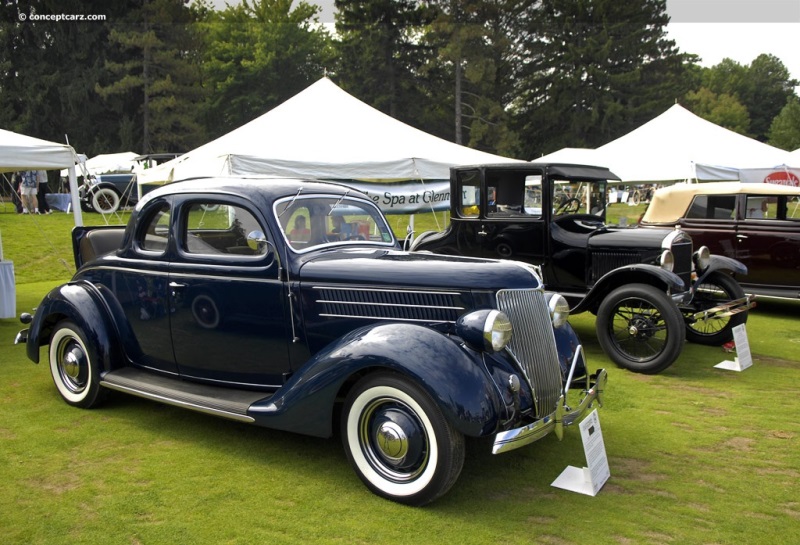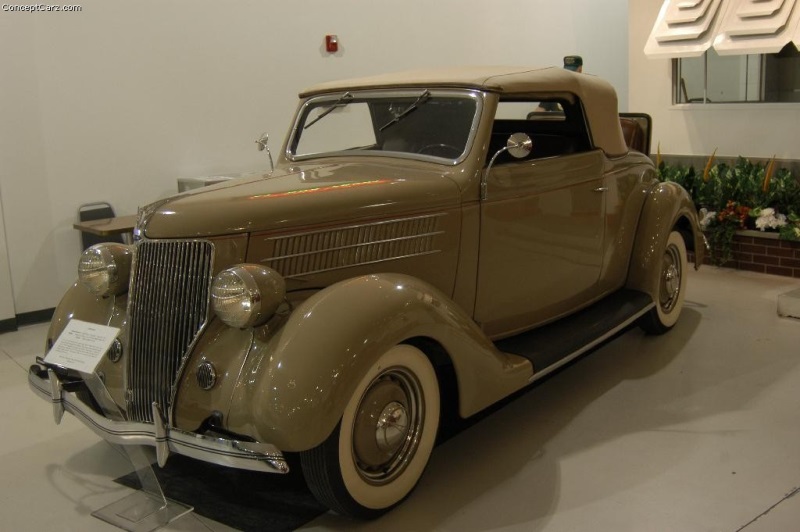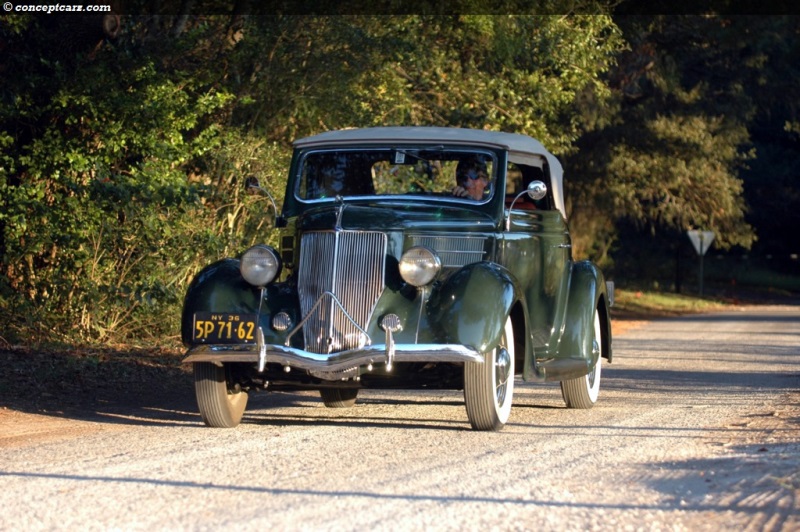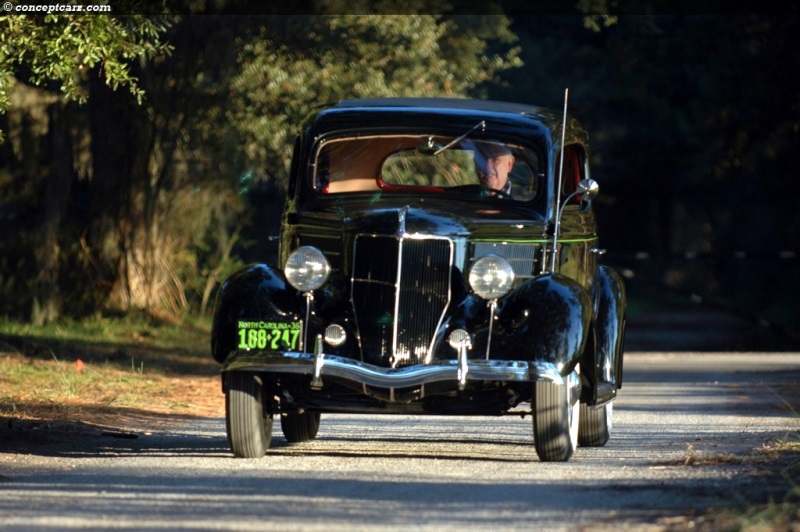The 1936 Fords, in most respects, were a continuation of the best-selling 1935 models, with a number of appearance changes that made them seem almost completely new. The 1936 Fords were given a front-end restyle by Holden 'Bob' Koto, of Briggs Manufacturing Company. Koto enjoyed a career that spanned nearly four decades, later helped Dick Caleal model the 1949 Ford, and worked for Raymond Loewy on the 1953 Studebaker. During the 1930s, market preference continued to shift toward closed bodies, and while some manufacturers discontinued the open models, Ford continued to offer a diverse lineup including no fewer than six open body styles. The list included a roadster, phaeton, two cabriolets, and two convertible sedans. Total soft-top production at Chevrolet and Plymouth failed to reach 8,000 combined while Ford managed nearly 20,000 open car sales. 5,601 of those were the four-door convertible sedan, and although significant for industry-wide convertible sales, it represented a rather small percent (0.6 percent) of Ford's overall production. Prices on the 1936 Ford Model 68 Eight ranged from $510 to $670. Body styles priced below $600 included the Deluxe Roadster, Deluxe Phaeton, 3- and 5-window coupe (Standard and DeLuxe), Tudor Sedan and Tudor Touring Sedan (Standard and Deluxe), and the Standard Fordor Sedan. Body styles in the $600s included the Standard and Deluxe Fordor Touring Sedan, Deluxe Fordor Sedan, Station Wagon, cabriolet, and club cabriolet. The Cabriolet combined the sportiness of an open roadster with the comfort and security of a sedan. It had roll-up windows and an open-air rumble seat for passengers. The Club Cabriolet had seats for five 'indoors' and the rumble seat was replaced with a small luggage compartment. 
Deluxe Phaeton
View info and historyBody styles that sold higher than $700 included the Convertible Touring Sedan and Convertible Sedan.The most popular body style was the Standard Tudor Sedan with 174,770 examples built, followed by 159,825 of the Deluxe Fordor Touring Sedan. 125,303 examples were the Deluxe Tudor Touring Sedan. The Standard five-window coupe was also popular, with 78,532 examples built, and 42,867 of the DeLuxe Fordor Sedan. The 'Woodie' station wagon with its half-timbered body originated during the early-1930s and its popularity peaked in the immediately post-war decades. In the post-war years, the Woodie's popularity with California surfers ensured its cult status. For 1936, Ford built 7,044 examples of the station wagon, and they used the cowl and windshield frame from the convertible. Henry Ford owned his own forests near Iron Mountain, Michigan, where he grew hardwoods for car bodies. Mr. Ford allowed no knots in the product and preferred the hard maple for the structural integrity. The roof slats were made of basswood, and the side panels were of cross-grained exterior birch or gum plywood. The wood bodies required extensive maintenance and 'upkeep,' and since many were poorly maintained, their value quickly depreciated after only a few years. 
Deluxe Phaeton
View info and historyHenry Ford introduced V8 power to his vehicles in 1932, and although this engine configuration and size was no novelty, its successful production in such significant figures at such a low price was remarkable. Styling was similar to the superseded Model A, but with the additional 25 horsepower from the V8, its performance was substantially different. By the mid-1930s, the V8's initial problems had been resolved and horsepower had grown to 85 bhp. in 1933, just a year after the introduction of the V8, Ford increased the wheelbase to 112-inches and employed a new X-member double-drop chrome-vanadium steel chassis. A significant restyling occurred for 1935, becoming lower and more streamlined, and advertised by Ford as 'Greater Beauty, Greater Comfort and Greater Safety.' By this point, the entire Ford model lineup was the V8 offered in no fewer than 15 Standard or DeLuxe body styles. By 1936, the styling cues that began on the 'Deuce Coupe' had also been refined and were more integrated and gracefully proportioned. The hood began with a sharp body-colored, V-shaped radiator housing and highlighted in DeLuxe models by thin vertical chrome bars complemented by a double row of hood side louvers separated by thin chrome spears. There were bullet-shaped headlamp buckets with distinctive convex lenses and bright stainless rims. A chrome-plated Lincoln-inspired Greyhound mascot rested atop the bright center hood molding. Both the front and rear fenders were fully skirted, completely concealing the car's chassis from view. The elegantly raked windshields and gracefully formed bumpers were a few of the aerodynamic design patterns popular during the era. They were an evolutionary step from the traditional flat radiator and grille of the previous models, foreshadowing the rounded and streamlined appearance of future designs. Distinguishable features of the DeLuxe models included brightwork around the windshield, headlamps, and grille, along with dual chrome mirrors, polished side spears, blue dot taillights, and dual horns. Examples built later in the year received a rearview mirror, clock, dual windshield wipers, and wheel trim rings. The list of optional equipment included a radio, radio antenna, heater, electric air horns, leather upholstery, wind wings, dual windshield wipers, a rumble seat on the coupes and roadsters, seat covers, luggage rack, spotlight, and a clock. A banjo-style steering wheel and 'spider' wheel covers were also part of the options list. 
Station Wagon
Chassis #: 82797048
View info and history
Auction entries : 21936 was the second year for the transverse leaf springs that were moved in front of the axle, providing a longer 'springbase' resulting in improved drivability and a softened ride, and described by Ford as 'Center Poise Ride.' The 90-degree, eight-cylinder engine had a cast-iron block, mechanical valve lifters, a two-barrel downdraft carburetor, three main bearings, 6.3:1 compression ratio, and delivered 85 horsepower at 3,800 RPM and 148 lb-ft of torque. Engines were mated to a three-speed sliding gear transmission with a single dry plate, molded asbestos lining clutch, and floor shift controls. Power is transmitted to the rear axle by a torque tube driveshaft. The steering used a tighter ratio, and stopping power was by mechanical, internal expanding brakes on 16-inch steel artillery type wheels with 10.5-inch bolt circles and open centers. 6.0016 white sidewall tires were optional. The flathead V-8 was moved forward by over eight inches and the body was wider.Ford advertising of the era featured Clark Gable touting a comfortable ride, rigid X-Frame, and engine features that were superior to Plymouth and Chevy such as aluminum pistons and heads, a stiff and lightweight crankshaft, and hardened valve seats. During the 1936 model year, Ford built its 20 millionth vehicle, had a 17.9 million-dollar profit, and outsold Chevrolet. This was the first time Ford outsold Chevrolet since the Model A. 
Deluxe PhaetonThe 1936 models were introduced to the public on October 19, 1935, and produced through September of 1936, with over 1,124,745 1936 examples built worldwide (their largest single-year sales of the decade). Additionally, between 1932 to 1936, Ford produced approximately three million flatheads.
by Daniel Vaughan | Apr 2019
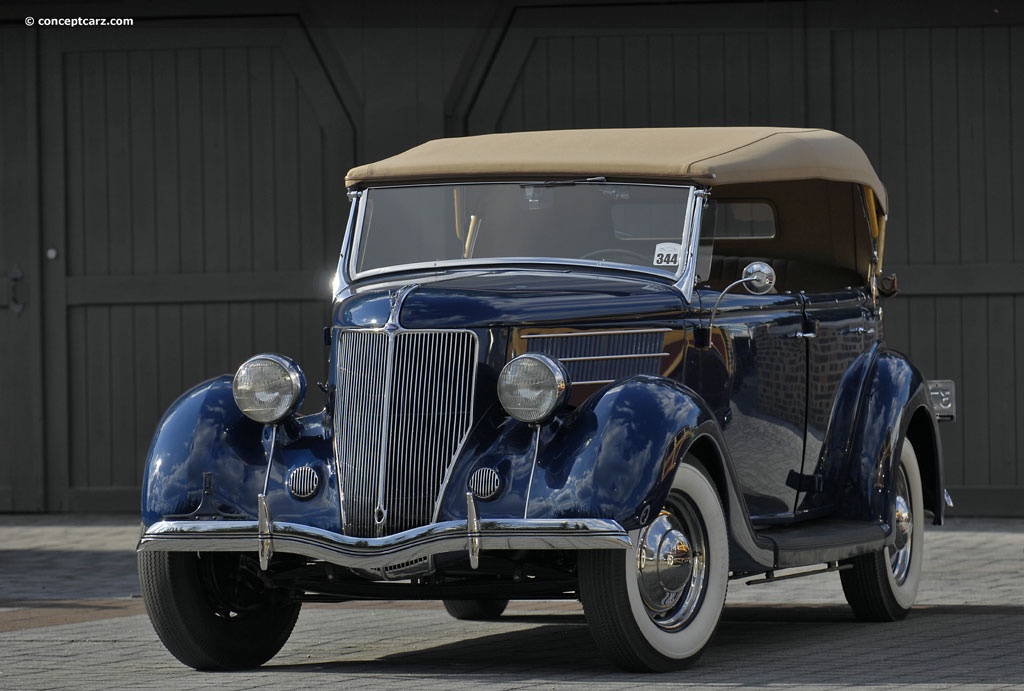
Deluxe Phaeton
View info and history
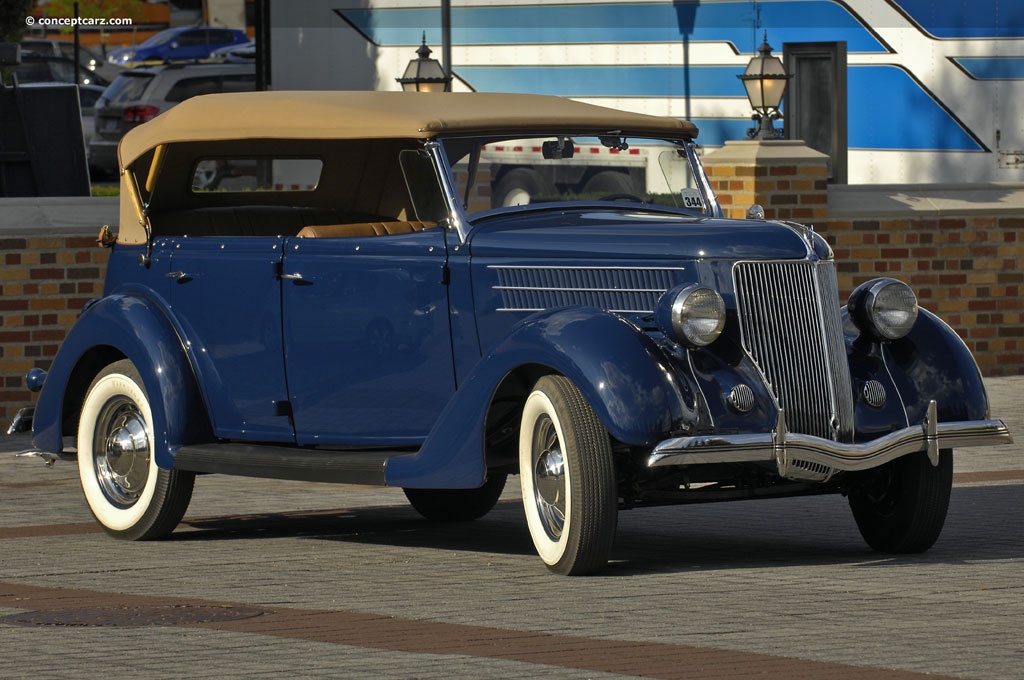
Deluxe Phaeton
View info and history
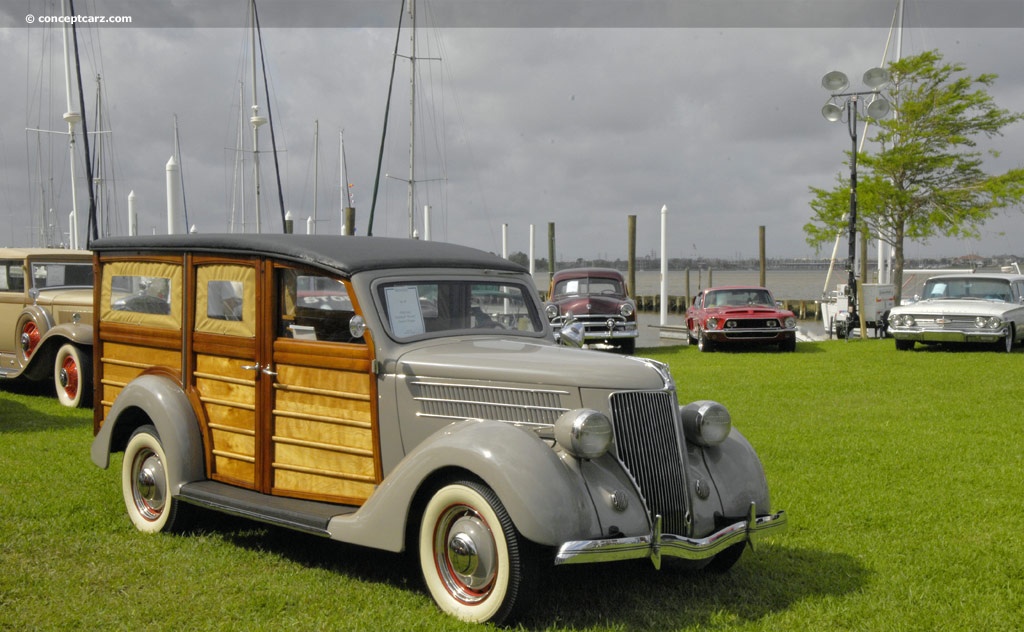
Station Wagon
Chassis #: 82797048
View info and history
Auction entries : 2
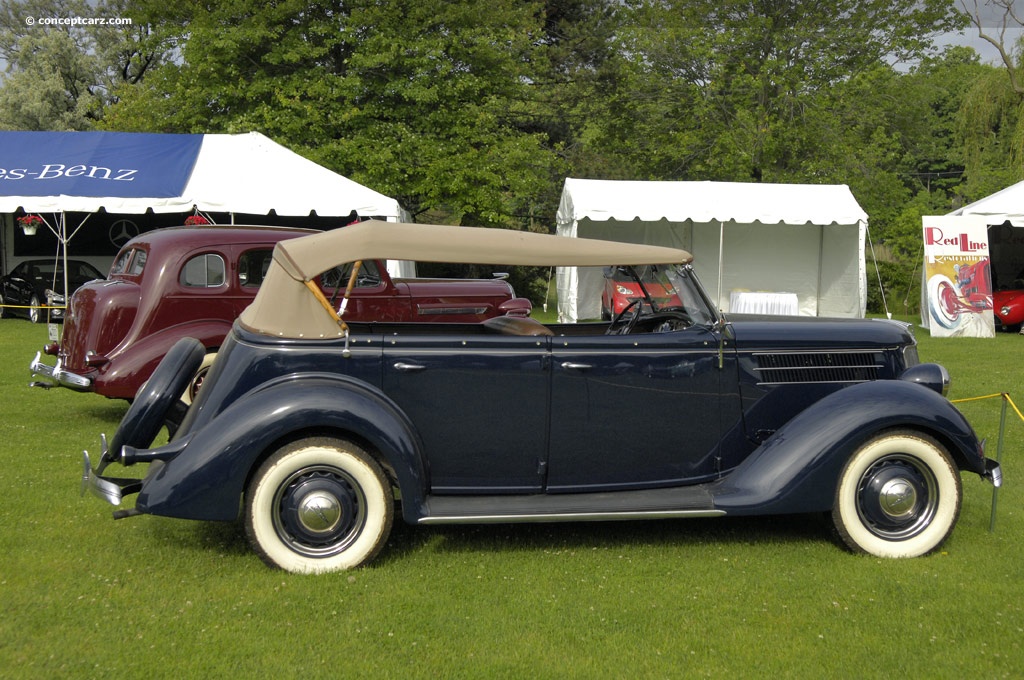
Deluxe Phaeton
by Daniel Vaughan | Apr 2019
Similar Vehicles
Similarly Priced Vehicles
1936 Ford Model 68 Vehicle Profiles
Recent Vehicle Additions
Performance and Specification Comparison
Price Comparison
Related Automotive News

Gooding & Company Presents the Estate of Mark Smith Auction, Entirely Offered Without Reserve, this April
The Estate of Mark Smith Auction will feature offerings, all without reserve, from the personal collection of the late Mark J. Smith, including largely original and unrestored Classic Era automobiles from Mercedes-Benz, Chrysler, Bentley, White, and...

Historic and Prestigious Classics to Take Center Stage at Gooding & Company's Pebble Beach Auctions; Full Catalogue Launches Online Today
The undisputed star of the show is the 1937 Bugatti Type 57SC Atalante, alongside a 1930 Bentley 4 12 Litre Supercharged Blower Sports Tourer and a 1931 Bentley Eight Litre Sports Tourer.
The official auction house of the Pebble Beach Concours...

Škoda Continues To Accelerate Interest With New Yeti SE Drive And SE L Drive Models
Featuring up to £2,295 worth of extra equipment for just £935
SE Drive and SE L Drive based on already generously-equipped SE and SE L trims
Choice of three engines 1.2-litre TSI 110PS, 2.0-litre TDI 110PS and 2.0-litre TDI 150PS with front or fou...

Edsel Ford's Speedster Stars at 'The Amelia'
Edsel Fords continental car, a custom boattail speedster, will take its rightful place in the Sports Car Class of the 18th annual Amelia Island Concours dElegance. In the shape of Edsels seminal speedster is the genesis of Fords legendary design...

Lincoln at Los Angeles Auto Show Press Days: Celebration of Its Past and Future As Brand Rolls Out Its Reinvention
The brand pays tribute to its heritage today, displaying seven of the most influential Lincoln designs
Thursday sees a display full of the all-new MKZ premium midsize sedan and MKZ Hybrid, the future of Lincoln, on the Lincoln stand
Lincoln launches...



































